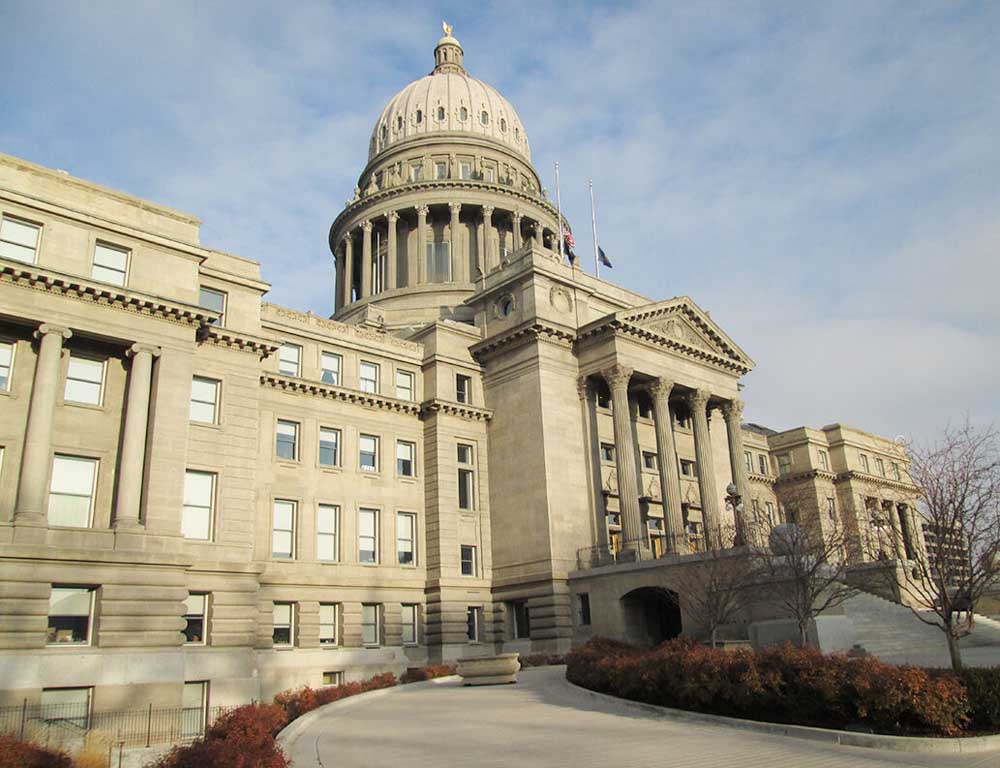Groundwater districts’ excess-use assessments could jump in Idaho
Published 8:45 am Thursday, February 15, 2024

- Idaho State Capitol
Idaho groundwater districts could triple the special assessments they charge members for excess use if state legislation passes.
Districts have used excess-use fees and special assessments to encourage water users to follow their water rights and mitigation plans. The current fee limit of $100 per acre-foot of excess water use “has lost effect due to inflation and increased commodity prices,” according to House Bill 467. The bill, which would raise the cap to $300, “brings that limit up to current times and provides a disincentive to overuse irrigation water.”
Under a 2015 settlement with a coalition of Eastern Snake Plain Aquifer surface-water users, groundwater users with junior rights can avoid curtailment if they comply with a state-approved mitigation plan.
HB 467 “would further enhance a district’s ability to see those mitigation plans through, and it provides proper incentives for irrigators to follow those mitigation plans in their farming practices and rotations,” the sponsor, Rep. Doug Pickett, R-Oakley, told the House Resources and Conservation Committee Feb. 13. The panel voted to send the bill to the full House with a do-pass recommendation.
The current maximum assessment for excess use “is low enough that people are willing to pay the penalty and avoid any curtailment,” Pickett, a rancher, said in an interview. That hurts districts paying for water to meet mitigation plan terms.
A higher limit would support districts’ good-faith efforts to comply with the settlement agreement and, ideally, incentivize good behavior, he said. He is a member of Southwest Irrigation District, which requested the legislation and has a state-approved mitigation plan.
Districts recently have been submitting their own mitigation plans for Department of Water Resources approval rather than joining together, said Bob Turner, Idaho Ground Water Appropriators executive director. Factors include districts’ unique characteristics and mitigation needs, and updated methodology orders that the department uses to calculate volumes owed.
In a mitigation plan for which the Bingham Groundwater District seeks IDWR approval, the percentage of acres on which usage would end is based on the highest five-year, rolling-average injury to the surface water coalition in the Eastern Snake Plain Aquifer from 2000 to 2022.
The Bingham district would not use groundwater on at least that number of acres each year, board member Adam Young said. Some of the affected ground could be converted to surface water, where canal shares are available, or enrolled in a conservation reserve program. The plan also includes provisions for aquifer recharge.
Allowing an excess-use assessment up to a higher limit would provide “flexibility to districts to be able to apply it to an individual circumstance,” he said.
Idaho Ground Water Appropriators would not support the bill if it required districts to increase their excess-use assessments, putting what is now a local decision into statute, Turner said. But in the bill, “it’s up to the districts.”
The bill probably would help to cut down on excess use, such as where the assessment is set at the higher limit and a lower-value crop is grown, he said.







